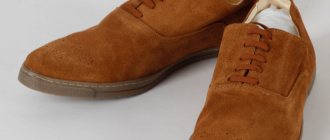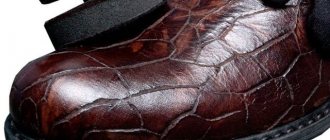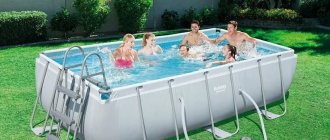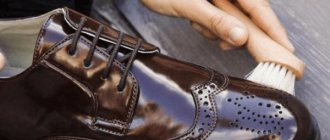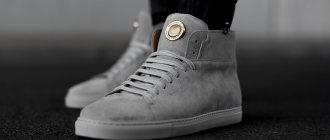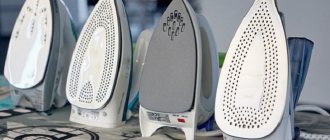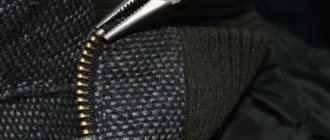Winter is a severe test for any boots or shoes, so during the cold season, increased demands are placed on shoe soles. In a quality product, it not only keeps your feet warm and dry, but also demonstrates stability on roads covered with a layer of snow or ice. Properly selected non-slip soles are the key to safety and comfort in winter. That is why, with the approach of cold weather, the most pressing questions are: what to look for when choosing boots in order to reduce the risk of injury during periods of icy conditions, and what ways are there to independently protect your shoes from slipping?
Basic rules for choosing shoes in icy conditions
Saving money and time when choosing shoes for the frosty period can result in an unplanned visit to a traumatologist. Therefore, when looking for a winter model, you need to remember safety and adhere to the basic rules:
- Shoes should have anti-slip soles: made of frost-resistant material with good tread.
- It is worth giving up the undoubtedly beautiful, but unstable stiletto boots. It is important to choose shoes whose soles provide maximum contact area with the road surface. The permissible heel height is no more than 4-5 cm, and the heel itself should be wide. Such boots will provide the proper level of grip and stability in icy conditions, which cannot be said about boots with a narrowed high wedge.
- The recommended base thickness is more than a centimeter. It will protect your feet from hypothermia and will not allow the material to freeze to the point of hardening, which increases the risk of slipping.
You can often find ratings of the most non-slip winter shoes. The favorites there remain insulated boots with thick, textured or flat solid soles, or, as an option, with low, wide heels. Among the most successful models for icy conditions, felt boots made from natural sheep felt are also popular. However, even these proven options can fail at the wrong moment, because in fact, only the sole made of the right material does not slip on ice.
You should avoid stiletto heels in winter
Wide and stable heel
Anti-slip sole with correct tread pattern
Wide nose
The task of a competent seller
Each buyer, visiting a store, has certain requirements and wishes, but very often he himself cannot clearly and clearly formulate them and certainly cannot name the sole material that is suitable for him. The task of a competent seller is to identify needs and offer shoes that best meet the visitor’s expectations. If some properties of the product are clear to the buyer immediately or during fitting: style, comfort, color, size, then the material of the sole and its characteristics will not be clear to him even after several days of wear.
Outsole material
Not every raw material is suitable for the production of winter shoes: if frost resistance is insufficient, the base “dumbs”, becomes hard, and slippage increases. The sole should be sufficiently soft, elastic, and moderately wide - insufficient thickness leads to rapid freezing. In the manufacture of the sole part, the following materials are mainly used:
- TRP, TEP (thermoplastic elastomer), the main advantage of which is frost resistance. The material can withstand low temperatures - up to 45 ° C. The most non-slip soles are made from this raw material.
- PU (polyurethane) is good for making demi-season shoes, but not winter shoes. At sub-zero temperatures it begins to slip a lot, and at a frost of 20 degrees it can burst.
- TPU (thermopolyurethane) has good anti-slip performance. The downside is that it does not retain heat well, and therefore it is used only together with polyurethane, making a two-layer sole.
- PVC (polyvinyl chloride) is unsuitable for winter shoes: the base of it slips a lot. Frost resistance is zero, so in low temperatures the PVC sole will burst at the slightest load.
- EVA (ethylene vinyl acetate) is a wonderful lightweight material used to make one-piece boots or clogs. It retains heat well and is waterproof, but in frosty weather it slips a lot, so it is only suitable for summer and demi-season shoes.
- Rubber is an old and proven material: high wear resistance, elasticity, and flexibility have been proven over centuries of its use. The high-quality rubber sole is practical, frost-resistant and non-slip. The only drawback is that rubber shoes are heavy and your feet will get tired quickly.
As a result, the best materials for the soles of winter shoes are rubber (with a sufficient degree of softness and elasticity) and TPR. For many users, the latter is preferable, as it is lighter in weight.
Shoes with thermoplastic elastomer soles must be dried carefully: place them away from heating devices, as it melts and loses its properties.
PVC soles are not suitable for winter
EVA
TPU
P.U.
Rubber
TEP
Tervolin's boots
4th place Price: 4500 RUR Limit temperature: -20
Normal winter city boots: leather on top and fur on the inside. In principle, for the urban winter of central Russia, these shoes will be enough, but in Siberia, with thin soles, your feet will freeze out quite quickly. Actually, the test demonstrated approximately this: the boots did not maintain a positive temperature inside even for an hour.
Tread pattern
This is the second safety factor on the list. The idea of using tread on shoes came from the field of mechanical engineering, or more precisely, it was based on car tire production technologies. The depth and pattern of the sole provide better grip on slippery surfaces. The choice of tread comes down to the following nuances:
- The deeper the pattern, the more stable the shoes, which is especially noticeable when walking on icy or snowy slush during the thaw period. There is no clear standard here, but treads with a depth of 5-8 mm have the best grip.
- An asymmetrical pattern with multi-directional grooves provides better grip on the road surface. If the tread grooves are drawn in one direction, the foot will slide in the same direction. Diversity balances this process, providing stability.
- The more individual elements of the pattern, the better the coupling. The grooves are cut at an acute angle, which enhances penetration into a loose surface, for example, snow or crushed ice.
- Stability is also increased by various structural elements such as spikes or a folding bar with metal teeth. But these developments are used for the production of specialized shoes for sports or military uniforms.
In addition to safety on a slippery surface, the tread solves other problems: for example, it relieves stress from the calf muscles and has shock-absorbing properties.
With spikes
Sufficient tread depth
Multi-directional pattern
BONUS
Separately, outside the test, I decided to try electrically heated thermal insoles. More than once I have come across chemical insoles that heat up while the reaction is taking place. They are typically disposable, which is why I was interested in these insoles. I took Thermacell thermal insoles size 41. They can be adjusted to fit your shoes by cutting along the dotted line. They are charged via their own adapter and controlled by a remote control via a radio channel. Heating occurs in the forefoot, where the toes often freeze. Two heating modes of 38 and 44 degrees are quite enough in any shoe to avoid freezing. The battery will last for 5 hours in Medium mode. In general, a very convenient and interesting thing, but the price is steep (about 6500 rubles) and they cannot be bent or wet.
How to make the sole non-slip
If you have already purchased winter shoes, but the soles slip, you should protect yourself with the means at hand. These could be devices like stickers, ice-breakers, or even home methods. Each option has both advantages and disadvantages.
Anti-slip stickers
A simple way to make the sole less slippery is to use stickers. Most shoe repair shops offer a special service of gluing anti-slip elements for the winter.
They are most often made from rubber that has been subjected to pre-vulcanization - this gives the material elasticity, softness, frost resistance, and strength. The adhesive layer is double-sided tape. Advantages: they reduce the slipperiness of the sole, are aesthetically pleasing, and easy to use. Simply wash, dry the surface (you can first degrease it with an alcohol-containing solution), then carefully glue the protection to the sole, removing the top layer. Disadvantages - suitable only for a flat base without pronounced relief. In addition, the adhesive layer is short-lived: if it gets wet all the time, the sticker will quickly come off. The cost of a set of such elements ranges from 50 to 400 rubles. The size is adjusted to the shoe by simply cutting the standard product. The workshop service will cost from 300-400 rubles.
Ice access
Another option to get non-slip soles is attachments. They are also called ice drifts, winter walkers, spikes, anti-slips. Thanks to reliable fastenings, such products will last for more than one winter season, protecting your walks on icy conditions.
Ice drifts are made of frost-resistant rubber and galvanized stainless steel spikes; they are resistant to low temperatures. They are convenient because the size can be adjusted by increasing or decreasing the length of the fastening. They are most often made in the form of studded elements, fixed with straps that tightly cover the foot. Anti-slips are placed on the toe or heel of the shoe. Pros: efficiency, reliable fastening, adjustable size. Cons – the aesthetic appearance of the shoes suffers. Cost – 250-700 rubles per pair.
Ice access shoes are suitable for different models of shoes: boots with corrugated flat soles, dress boots with heels, sports shoes, snow boots and fishing boots.
Home methods
If icy conditions take you by surprise, and you don’t have time to purchase stickers or ice drifts, you can use the express methods at hand:
- Band-Aid. You need to cut out several pieces of a suitable size and glue them to the heel and toe area. This is a very convenient solution, since the product is in any first aid kit. The adhesive plaster quite effectively reduces the risk of injury by reducing slipping, but it does not last long: water will cause the adhesive layer to become wet and the sticker will come off.
- Sand. Rubber or superglue is applied to the sole (in multidirectional strokes or zigzags), then sprinkled with a sand mixture. After drying, excess is removed by shaking. This measure will ensure stability for three to four days, after which the powder will have to be renewed.
- Sandpaper. The popular method of imparting anti-slip properties can be used in two ways. The first is to rub the sole, causing damage to the surface, and the resulting roughness reduces slipping. The second is to cut out homemade stickers from sandpaper and stick them on strategically important places. The longevity of the effect depends on the quality of the glue.
In addition to those listed, there are many other methods, the appropriateness of which is highly controversial. For example, some believe that non-slip soles are the result of rubbing them with raw potatoes, although the effect of such a procedure (if any) is certainly short-lived. Another “super” method is scratching: the damaged surface will become rough, but can lead to destruction of the sole. Without calculating your strength, you may end up with holey boots instead of safe, non-slip shoes.
The proposed methods to reduce slipping have different effectiveness; for some people they are not suitable due to their short duration of action, for others - for aesthetic reasons. But safety is the top priority for winter footwear, so purchasing a pair of boots or boots with non-slip soles is beyond any doubt.
Sandpaper
Glue with sand
Raw potatoes
Band-Aid
